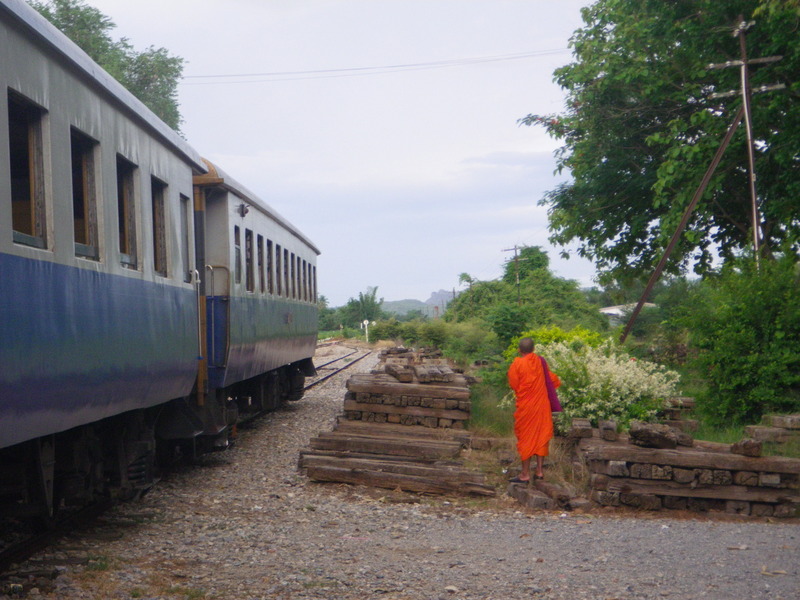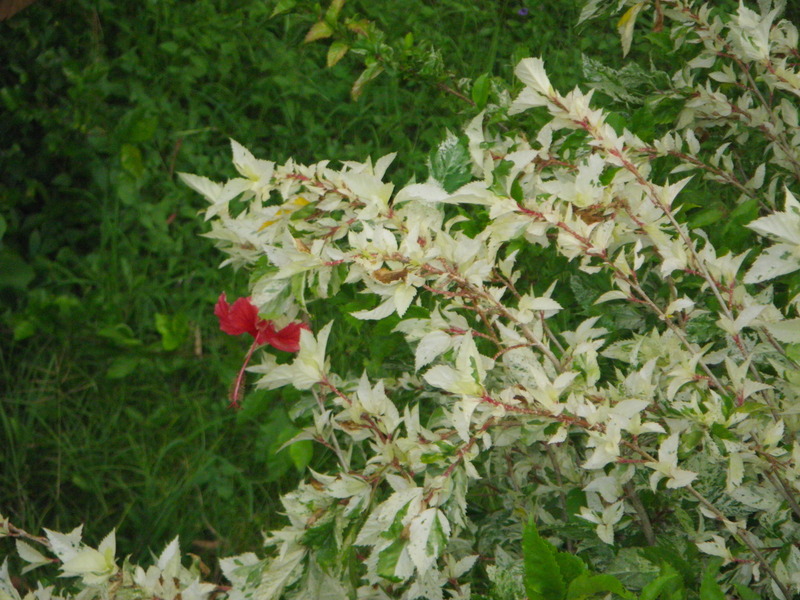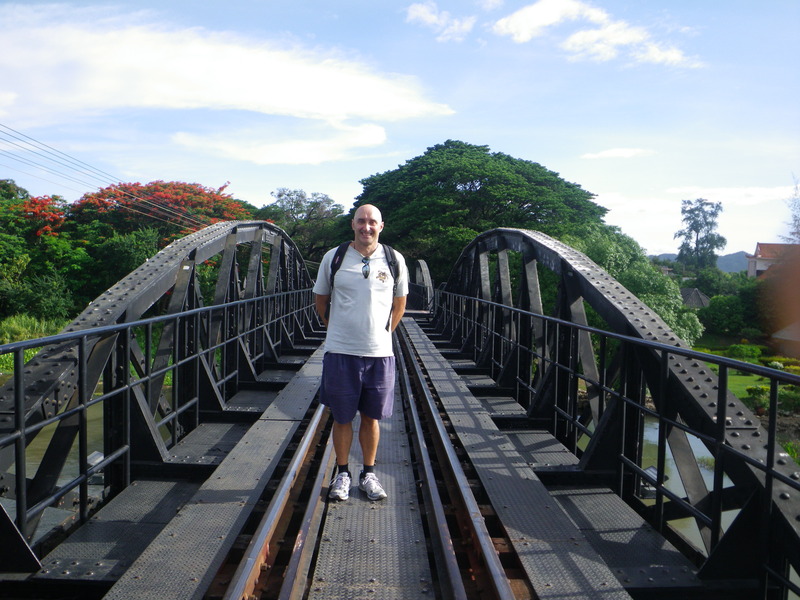
A little over 100km to the west of Bangkok is the town of Kanchanaburi, with the famous bridge over the river Kwai.
Kanchanaburi is a provincial capital on the Mae Nam Khwae, the river Kwai. It is a popular tourist destination both for the bridge over the river Kwai and the many beautiful national parks in its province.
The valley of the river Khwae (pronounced almost like the beginning of the word "question") is a long, densely forested valley surrounded by small limestone mountains. In places the valley is very wide and flat, and other places it is quite narrow and steep. Near the end of the valley is the Three Pagodas Pass, which leads over the mountains to Myanmar/Burma.
A long time ago, in 1890, the British in Burma considered building a railroad to connect their colony of Burma to Siam (as Thailand was known at the time) going over the Three Pagodas Pass. Considering both the terrain and the resources they had available, the British decided the railroad was not feasible.
A long time ago, in 1942, the Japanese had taken over all the former European and American colonies in South-East Asia, including the Philippines, Dutch East Asia (now known as Indonesia), British Burma and Malaya (now known as Myanmar and Malaysia), and, with consent from the French Vichy government, Vietnam, Laos, and Cambodia. Thailand, nominally independent but surrounded on all sides by Japanese-occupied territory, joined the German-Italian-Japanese axis and declared war on the Allies.
The Japanese were using Burma to attack Southern China, which they did not control, as well as India. However, bringing supplies to Burma from Japan was dangerous. Maritime traffic had to go through the Sunda straights, and although the Japanese controlled both sides of the straights (Malaya and Sumatra), Allied air attacks made the route too dangerous for reliable transport.
The Japanese were fighting wars on several fronts and did not have many resources available. But they had a lot of manpower, both from surrendered Allied troops in the territories they had conquered, especially British prisoners from Singapore, and from laborers from the same territories. And they determined that a railroad joining Bangkok to Rangoon was both necessary and feasible.
By combinations of trickery and force, but largely by force, about 100,000 prisoners of war and 200,000 Asian laborers were assigned to build the railroad, overseen by Japanese and occasionally Korean personnel. The war prisoners were from Britain, Australia, Holland, and America. The Asian laborers were from as far as Vietnam, but largely from Malaya, the Dutch East Indies, and Burma. With such a large labor force, the Japanese were able to make good progress on the building the railroad even with very little mechanized equipment.
The lack of resources extended to the food available to this labor force. In the first year or so, working conditions were relatively benign except for occasional severe beatings to enforce discipline. But after the first year, the combination of lack and inadequacy of food and medical care, increased workload due to the pressure to complete the railroad, and the oncoming rainy season with attendant diseases led to very high mortality. It is estimated that 46,000 Allied prisoners of war died, and probably around 100,000 Asian laborers.
The railroad was completed in 1943, and served the purposes of the Japanese war effort, though eventually the Allies defeated the Japanese in Burma, and the railroad was used in part for the Japanese retreat.
The railroad included many wooden trestle bridges. Near Kanchanaburi, at the beginning of the valley of the river Khwae, the railroad crossed the Mae Klong river with two parallel bridges, one a wooden trestle bridge and the other a cement and iron bridge. The iron for the second bridge came from another bridge demolished in Java. But although the railroad followed the valley of the river Khwae, there were no places where it crossed it, and no bridges over the river Khwae.
After many unsuccessful efforts, in 1945 Allied bombers, using a new radio-controlled bomb, succeeded in destroying the central span of the iron bridge over the Mae Klong.
After the end of the war, the British sold the railroad to the Thai government for 50 million Baht, which probably was worth more at the time than it is now. The current value of 50 million Baht is about $1.6 million.
The Thai government however did not maintain the railroad. Perhaps this was in part due to the British government demolishing part of the railroad on the Burmese side, out of fears that it might be used by rebels. At any rate, because of the way the railroad had been built, it required a lot of effort to maintain, and without maintenance it began to fall apart.
At one point, the Thai minister of Transports decided to inspect the railroad, against the advice of his Railroad department. He took off with a dozen people. Everything went well until they rounded a bend and, where a trestle bridge had once stood, nothing was left, so their vehicle fell into the ravine and everyone died.
Thereafter, the Thai government decided to maintain the railroad only up to a station called Nam Tok (which means waterfall). The central span of the iron bridge having been repaired, over time they replaced the wooden trestle bridges with more durable bridges.
In 1952, a former french officer in Indochina, Pierre Boulle, wrote a novel. He had experienced French officers collaborating with the Japanese. He evidently found such collaboration to be distasteful, even though legally these officers were obeying the wishes of the French government in Vichy. His book was about the bridge over the river Kwai. In french, the word "Kwai" would be pronounced about the same as the Thai name of the river "Khwae".
The novel he wrote was about British officers driven by pride and perfectionism into unwittingly collaborating with their Japanese captors. The novel was not historically accurate, but was popular enough that a movie was released in 1957, "The Bridge over the river Kwai". The movie was also very successful, in showing both the heroic western resistance to the Japanese, and their human fallibility in signing up to the Japanese war effort. Like the novel, also the movie was not historically accurate.
Among the major historical inaccuracies was that the railroad never bridged the Mae Nam Khwae.
When tourists started to visit Kanchanaburi and the "Death Railway", the Thai government decided tourists needed to be able to visit a bridge over the river Kwai. So they renamed the Mae Klong to Mae Nam Khwae Yai (big river Khwae), and the former Mae Nam Khwae to Mae Nam Khwae Noi (small river Khwae). This way, the tourists could see a bridge over the river Khwae, and even cross it on the railroad bridge. Everyone was happy.
In 2012, there are many paved roads in this area that a long time ago was impassable during the rainy season. There are several bridges over the river Khwae, though only one railroad bridge, the cement and iron bridge that was reconstructed after the war. There is a paved road through Sangkhlaburi and over the three pagodas pass to Myanmar. The "Death Railway", a single-track line, still crosses the bridge over the renamed river Khwae, with trains 3 times a day each way between Kanchanaburi and Nam Tok.
The forests and jungles that formerly kept the prisoners from escaping, being full of tigers, snakes, and other dangers, have frequently been turned into fields growing everything from teak to cassava, durian to corn, taro to okra, and other crops I don't recognize. Also cattle, goats and water buffalo, not to mention hydroelectric dams.
But there are still many beautiful forests, many of them organized as national parks and very accessible. I saw many birds in the valley of the Mae Nam Khwae Noi, though I wasn't able to take satisfactory pictures and I don't know enough to identify any but the most common.
So here is the famous bridge over the river Khwae.

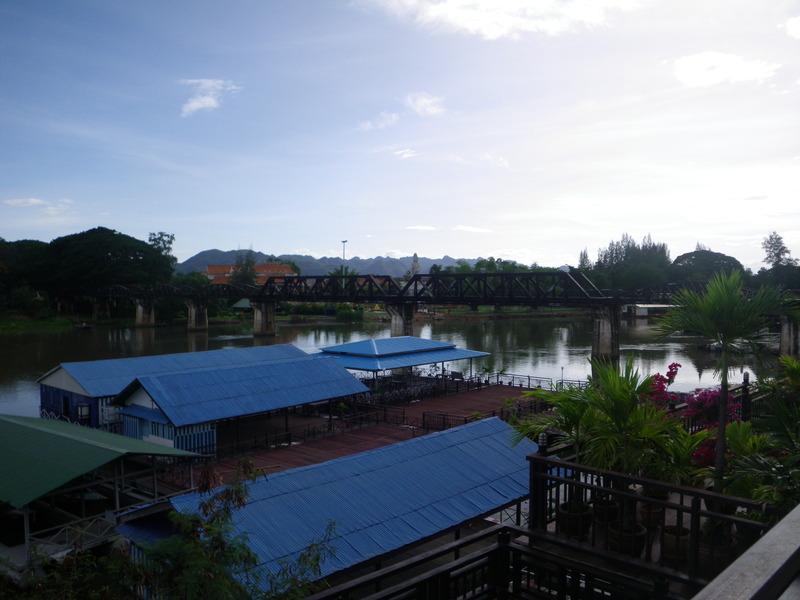


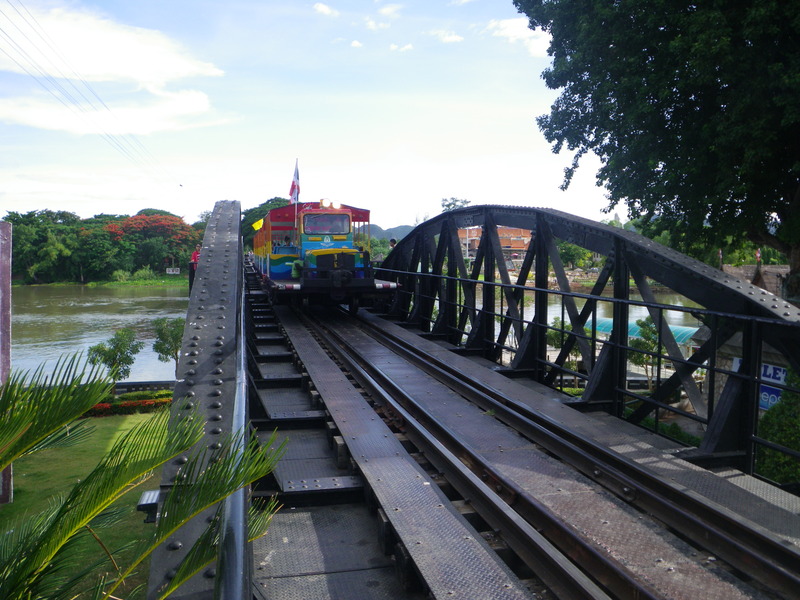
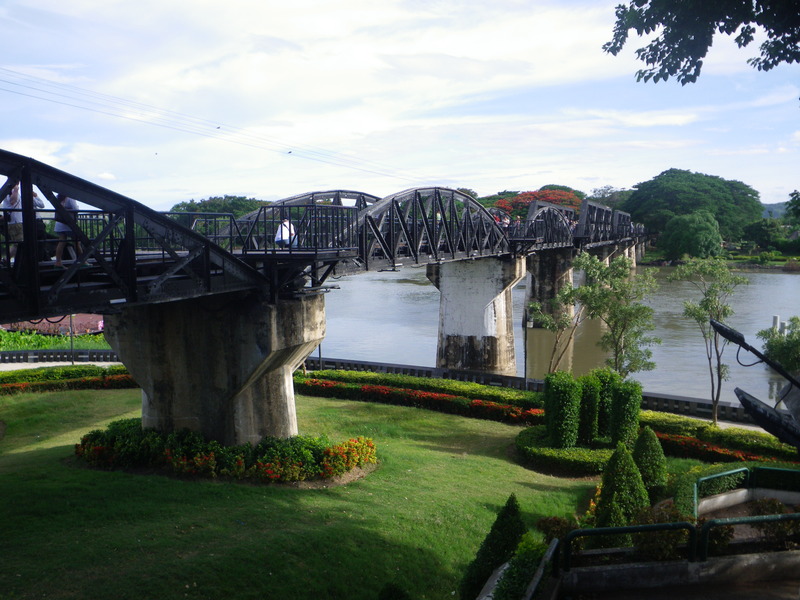
Some views from the bridge.



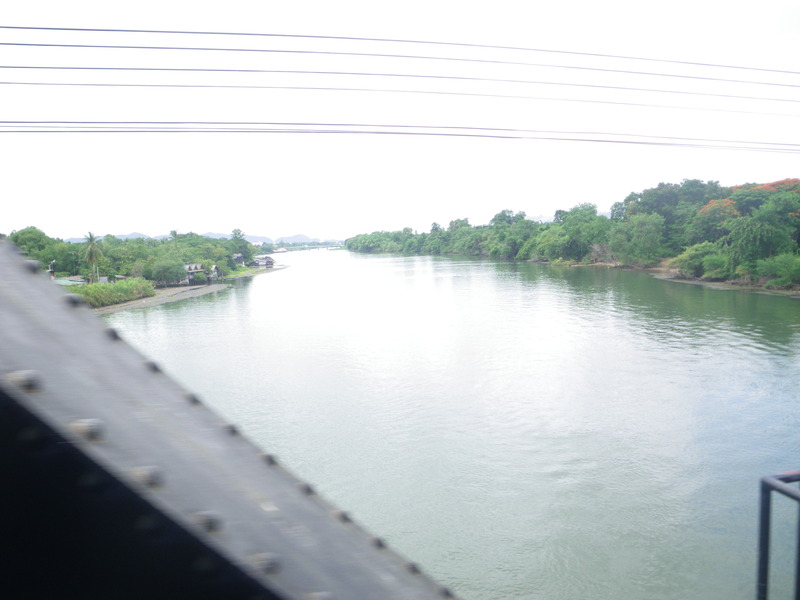
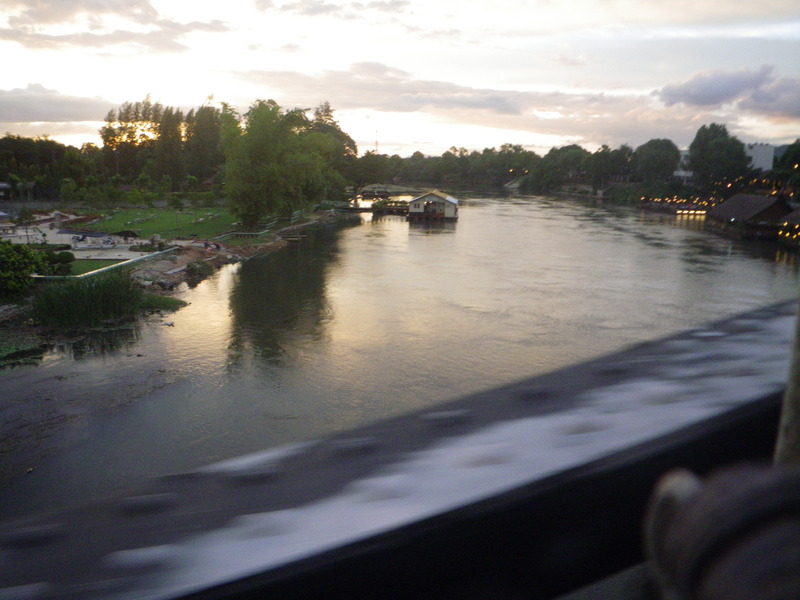

Views from the valley of the Mae Nam Khwae Noi, the original river Khwae.
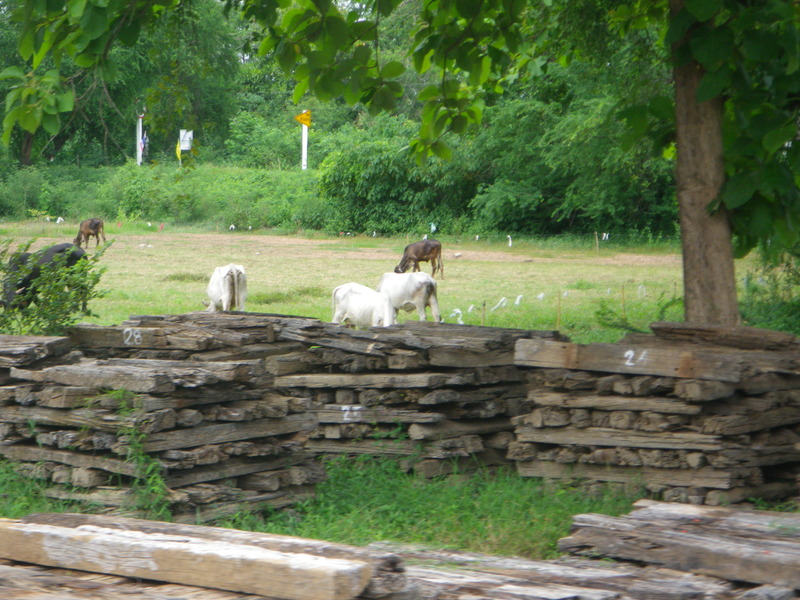

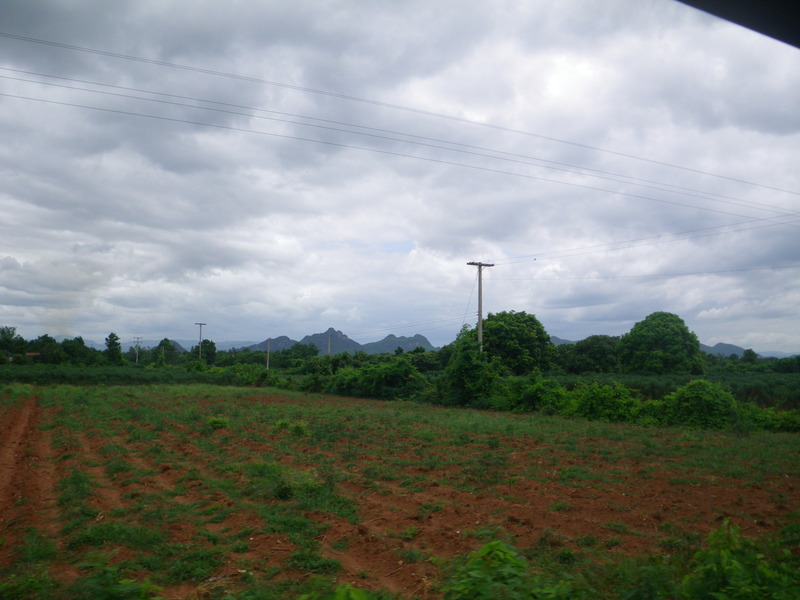

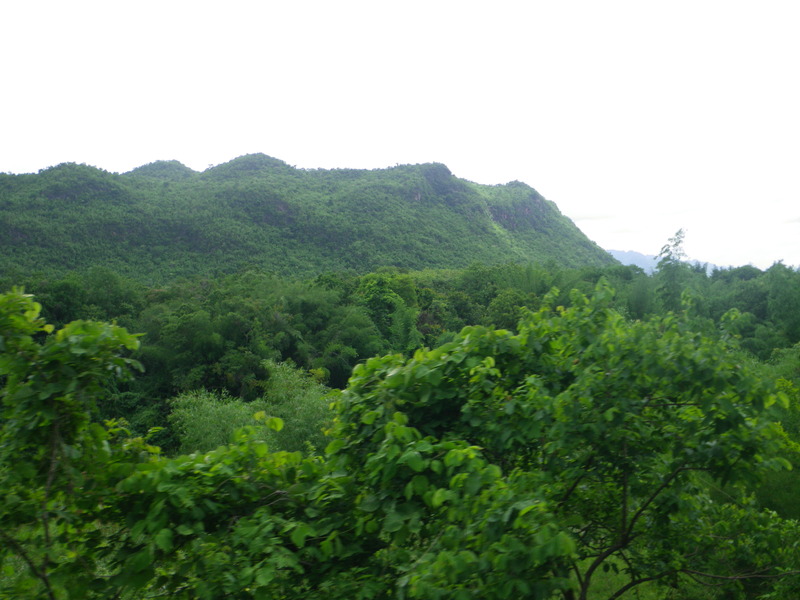

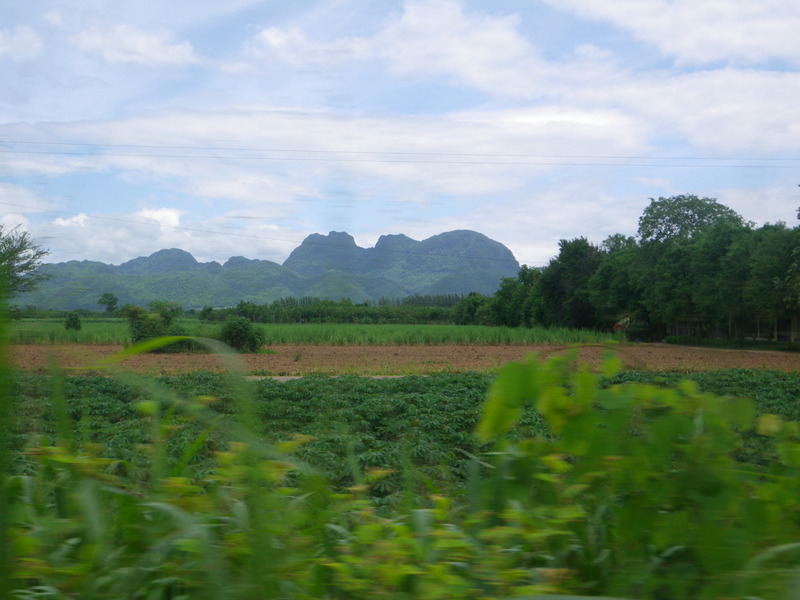
This view shows how close the train runs to hand-carved rock face.

A few more views of the Mae Nam Khwae Noi from the train.
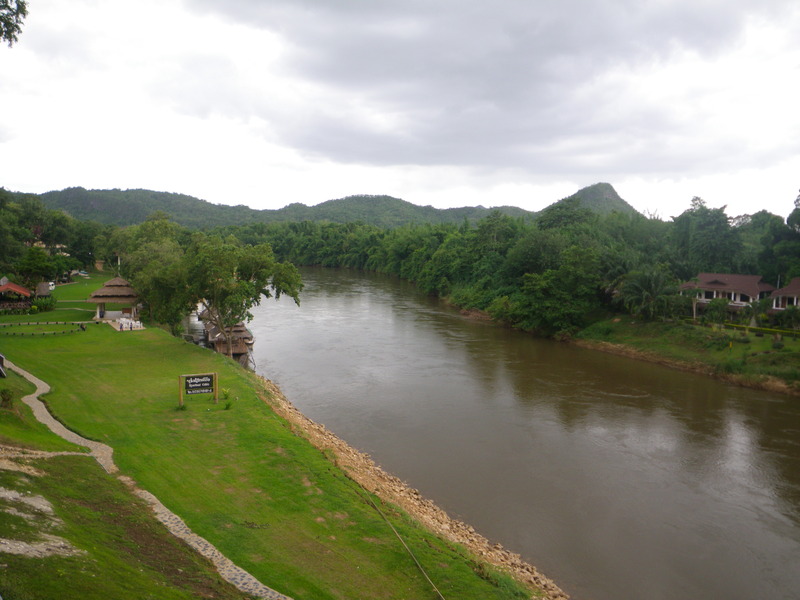
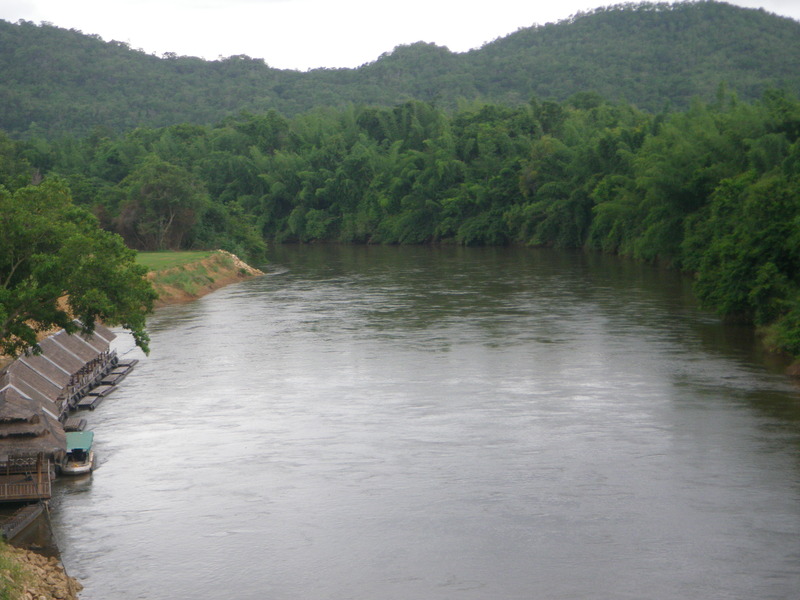



Finally, at the end of the line is Nam Tok (waterfall) Sai Nok Noi, the small Sai Nok waterfall (the larger one is several kilometers away, in Sai Nok national park, and I did not visit it). Sai Nok Noi is a popular place for swimming and watersliding.

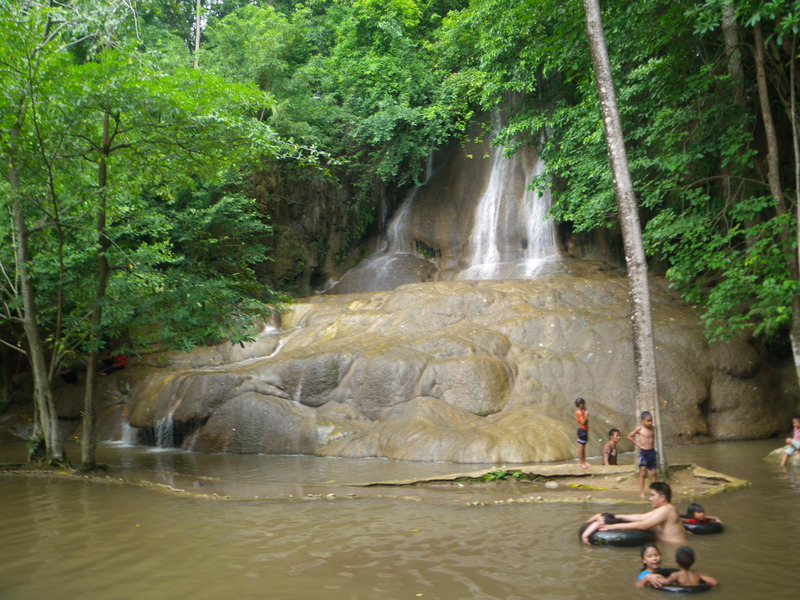
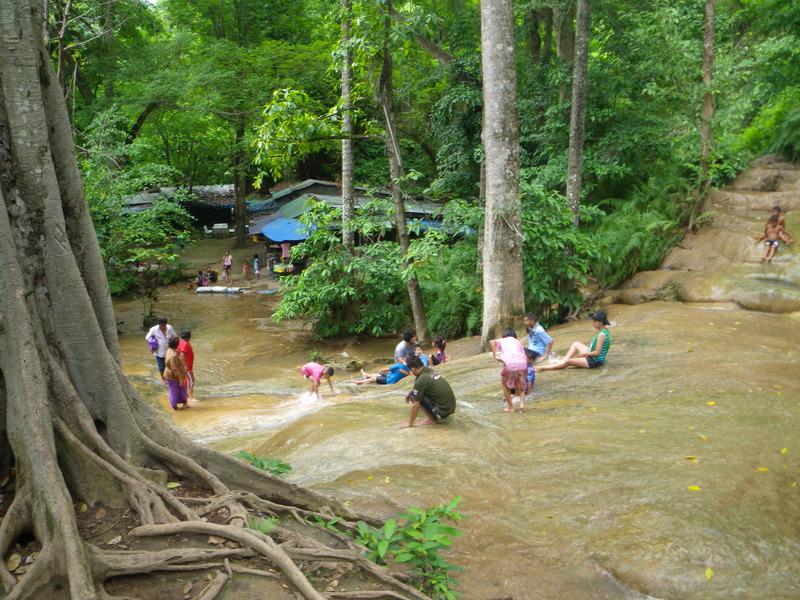
Nearby is a small cave with some Buddha statues. There is also a larger cave, but it was closed while I was there. Also, due to time constraints, I was at risk of missing the last of the 3 daily trains, so I did not attempt to find it.
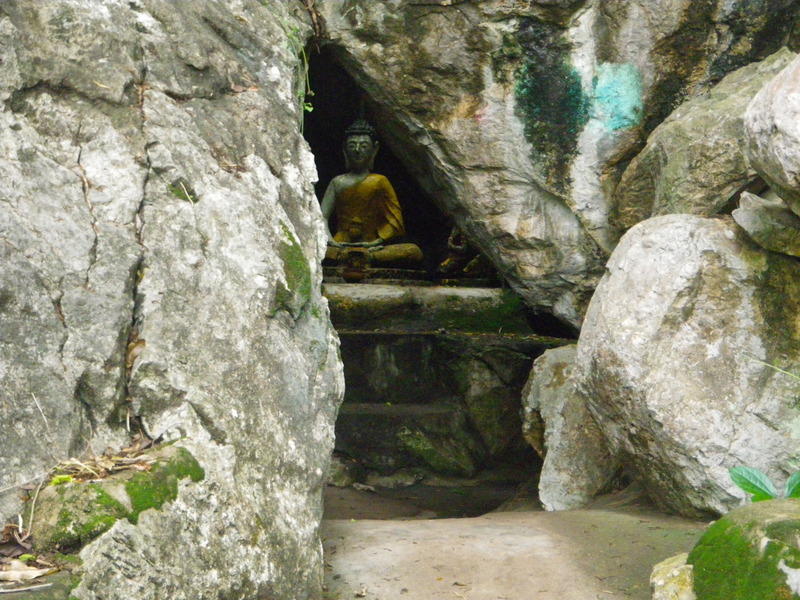
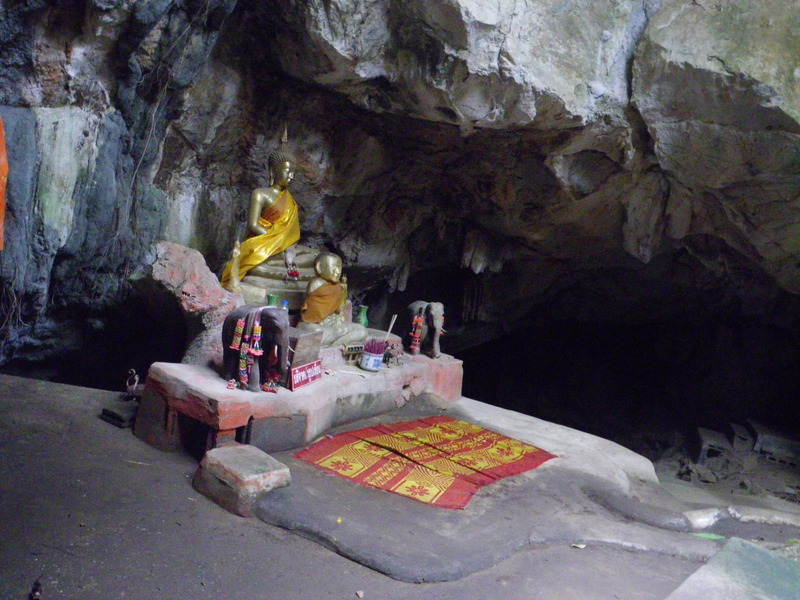
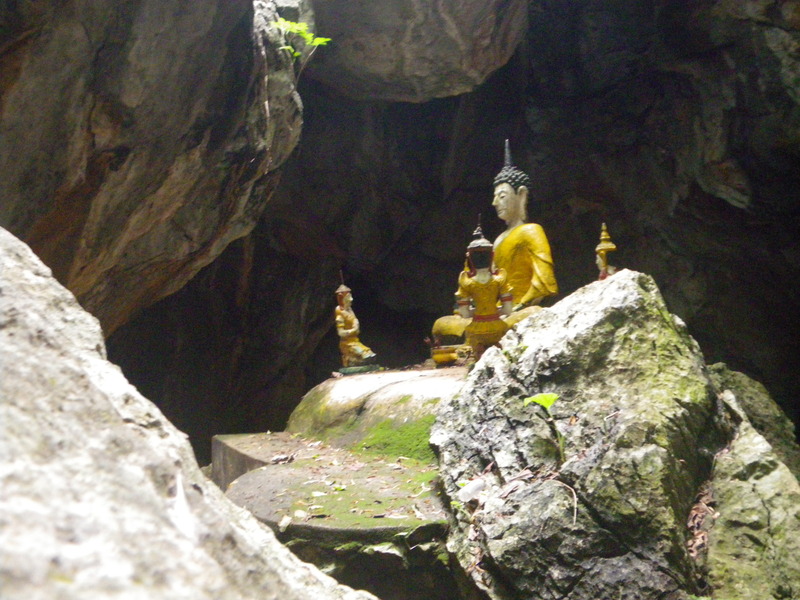
Some of the fields in the area seemed recently cleared, as they still had tree stumps.

A railroad crossing always seems to need a dog lounging around.
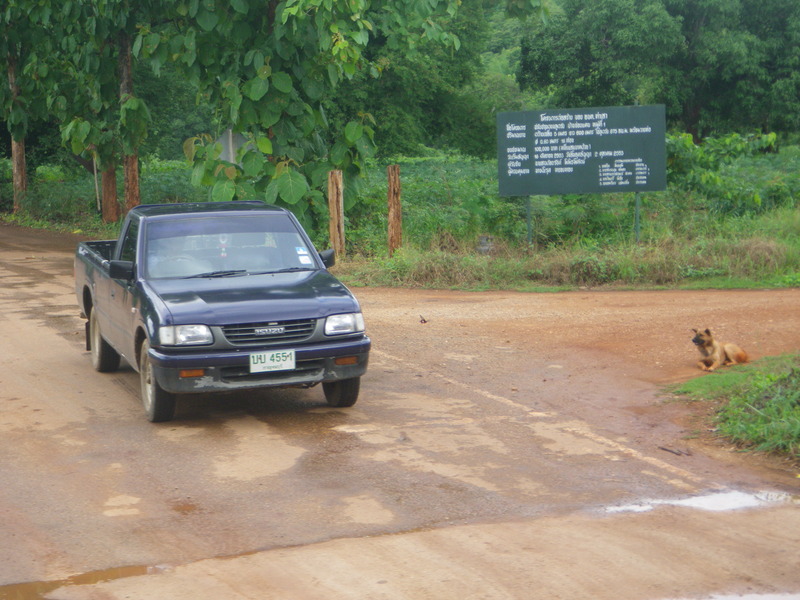
The seats were wooden, and a little uncomfortable after a few hours.

At one point we had to stop to wait for the train from the other direction. It was almost evening, but I liked the contrasting colors of these pictures.
